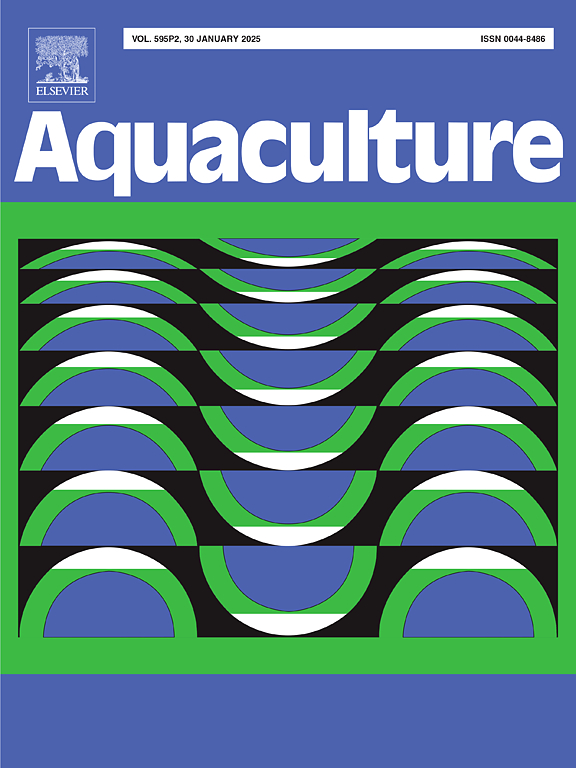Integrated transcriptomics and metabolomics uncover metabolites and pathways in American bullfrog (Aquarana catesbeiana) response to Elizabethkingia miricola infection
IF 3.9
1区 农林科学
Q1 FISHERIES
引用次数: 0
Abstract
Elizabethkingia miricola is a widespread zoonotic bacterium capable of causing diseases in both humans and animals. A comprehensive understanding of the host response mechanisms to E. miricola infection is critical for the development of effective control strategies. In this study, American bullfrogs (Aquarana catesbeiana) were experimentally infected with E. miricola, and transcriptomic and metabolomic changes in the liver and spleen were analyzed at 0, 1, 2, and 3 days post-infection. A total of 3818 and 4166 differentially expressed genes (DEGs) were identified in the liver and spleen, respectively, along with 518 and 464 differentially abundant metabolites (DAMs). Short time-series expression miner (STEM) analysis revealed six and seven significant gene expression patterns in the liver and spleen, respectively, with alterations in numerous immune and lipid metabolism pathways identified by gene set enrichment analysis (GSEA). The metabolomic data showed dysregulation of 86 pathways in the liver and 75 in the spleen, predominantly involved in lipid, amino acid, and carbohydrate metabolism. Additionally, the IL-17 signaling pathway and glycerophospholipid pathway were highlighted as pivotal immune and antibacterial defense pathways in bullfrogs through KEGG enrichment and STEM analysis. Notably, the multi-omics study uncovered a complex regulatory network and highlighted stage-specific immune and metabolic responses in bullfrogs during E. miricola infection, providing valuable insights into their defense mechanisms.
求助全文
约1分钟内获得全文
求助全文
来源期刊

Aquaculture
农林科学-海洋与淡水生物学
CiteScore
8.60
自引率
17.80%
发文量
1246
审稿时长
56 days
期刊介绍:
Aquaculture is an international journal for the exploration, improvement and management of all freshwater and marine food resources. It publishes novel and innovative research of world-wide interest on farming of aquatic organisms, which includes finfish, mollusks, crustaceans and aquatic plants for human consumption. Research on ornamentals is not a focus of the Journal. Aquaculture only publishes papers with a clear relevance to improving aquaculture practices or a potential application.
 求助内容:
求助内容: 应助结果提醒方式:
应助结果提醒方式:


